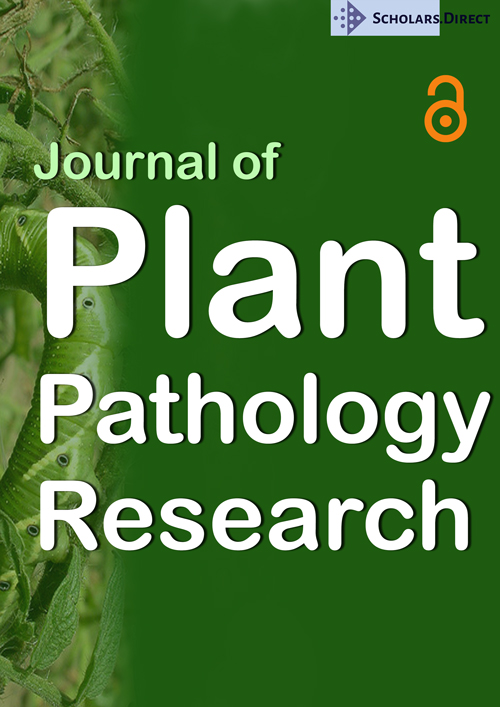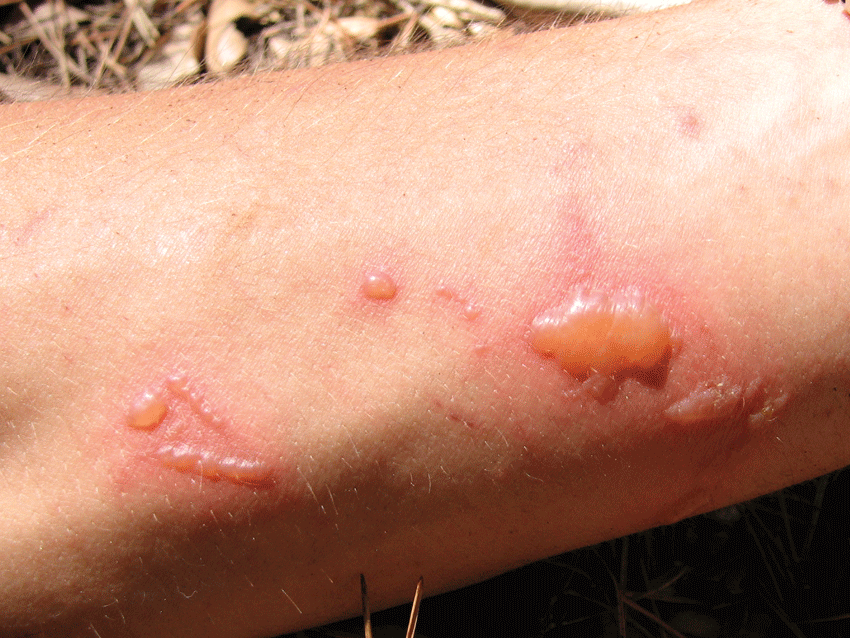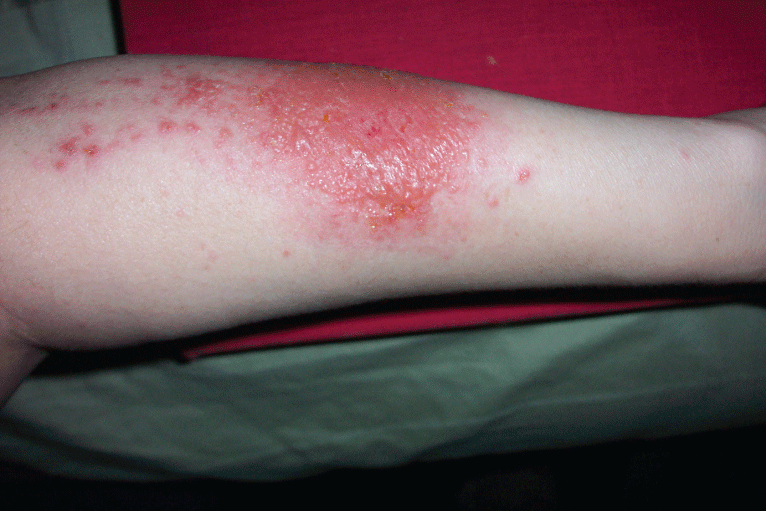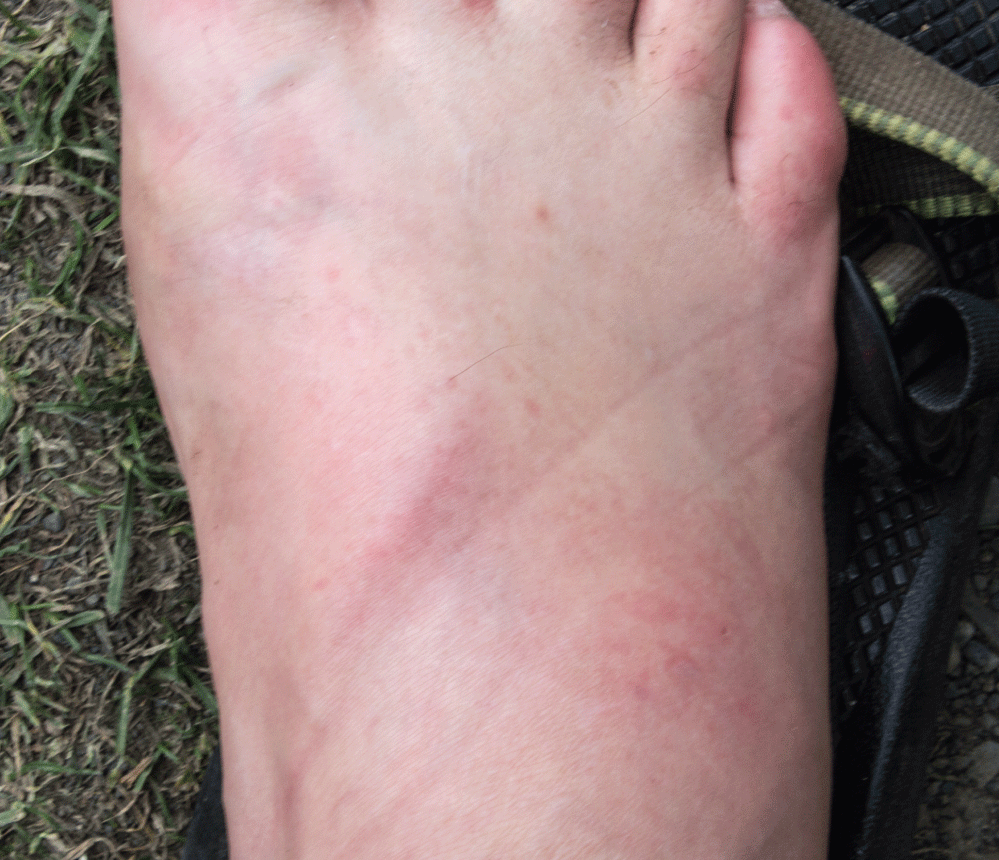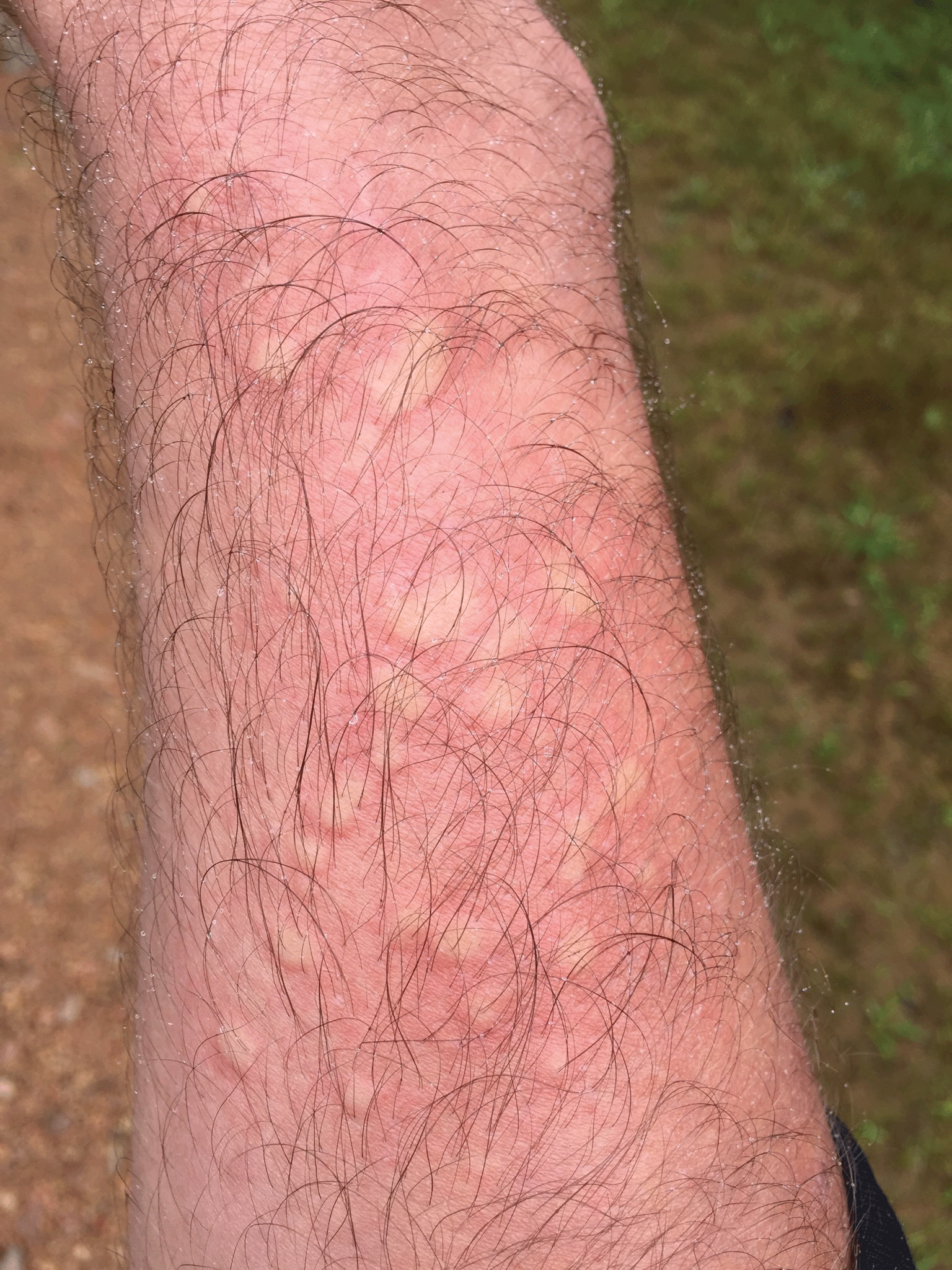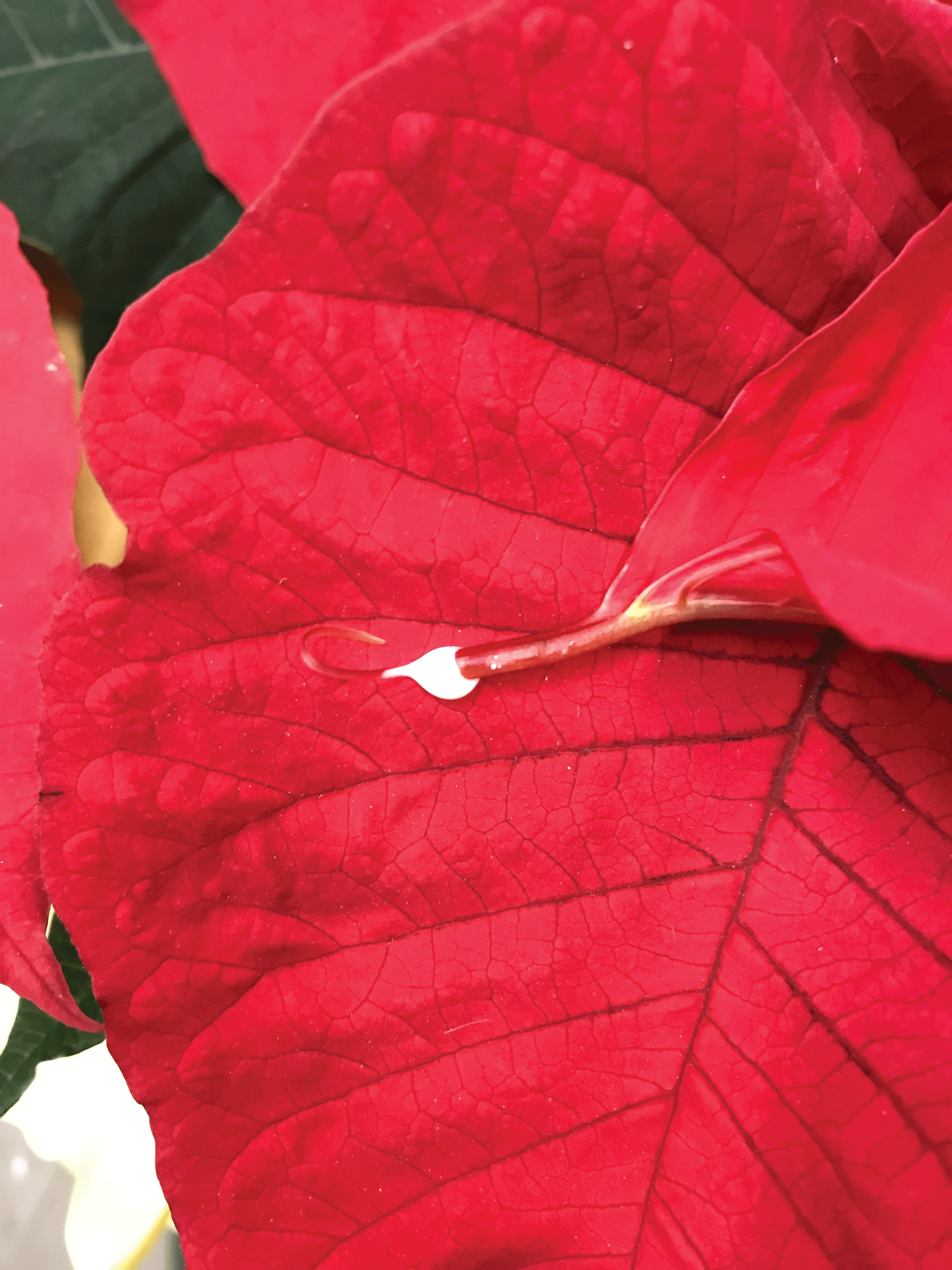Phytodermatitis: A Brief Review of Human Skin Reactions Caused by the Kingdom Plantae
Abstract
Many organisms of the kingdom Plantae may cause skin reactions when contacted or ingested. Those involved in work and recreation in the great outdoors as well as gardeners and other plant enthusiasts are well aware of this. While Toxicodendron dermatitis from poison ivy, oak, and sumac is the most common cause of allergic contact dermatitis (ACD) in the United States, this is just the tip of the iceberg. Numerous other species of plants are also known causes of ACD, producing a multitude of molecular culprits. Reactions, however, are not limited to type 4 hypersensitivities. Irritant contact dermatitis, phytophotodermatitis or lime disease, and urticarial rashes also occur when certain species come in contact with skin. Furthermore, ingestion of certain plant species may cause rare toxidrome skin eruptions. This paper reviews all of these major known types of phytodermatitis.
Keywords
Plants, Dermatitis, Phytophotodermatitis, Urticaria, Conservation, Epidemiology
Introduction
Species of the kingdom Plantae, represent a large and diverse collection, of which about 400,000 distinct organisms have been identified. No animal species utilizes more plants, both by quantity consumed and diversity of uses, than humans. Fields like material science, medicine, renewable and non-renewable energy, construction, textiles, and cosmetics owe a tremendous debt to these organisms [1,2]. We surround ourselves with beautiful specimens in our homes, gardens, and cities. Those who love the outdoors seek them out in their natural habitats. All of us touch and eat plants every day and while most interactions are highly beneficial some are occasionally hazardous.
When certain species are contacted by susceptible individuals, skin eruptions or phytodermatitis may occur. These rashes can be divided into 5 groups including phytophotodermatitis (lime disease), contact and irritant dermatitis, urticarial rashes, and rashes secondary to Euphorbiaceae and Saponin toxidromes [3,4]. Culprit species are numerous (Table 1). Development of rash varies greatly from individual to individual. For information on plants specific to a given area, contact the local Native Plant Society [5]. Avoiding contact with potentially harmful species is the best way to prevent rash [4].
Phytophotodermatits (Lime Disease)
Phytophotodermatitis, or lime disease, occurs when plant material containing psoralens or furocoumarins touch skin that is subsequently exposed to ultraviolet radiation [4]. Within 24 hours, erythematous-irregular patches and streaks will appear, followed by vesicle and large bullae formation (Figure 1) [4,6]. A burning sensation often accompanies the rash [6]. Lesions are replaced by hyperpigmented macules, which usually fade after a few months [4]. This reaction occurs when psoralen or furocoumarin molecules covalently bond to DNA pyrimidine bases after being activated by ultraviolet light. This process leads to cell death [4]. Plants of the genus Citrus (limes) and the family Apiaceae (wild carrots and parsnips) are known causes of phytophotodermatitis [4]. Topical steroids can be used to hasten recovery, but no treatment is required in most instances [6]. Table 2 summarizes example species and treatment for lime disease and other types of plant rashes.
Allergic Contact Dermatitis (ACD)
Toxicodendron plants produce the allergenic-oleoresin urushiol [7]. Poison Ivy, Oak and Sumac are the most common causes of allergic contact dermatitis in North America, with as many as 50 million people affected annually [7]. Five species, belonging to the genus Toxicodendron, are variable distributed throughout the continent and produce the allergenic-oleoresin urushiol [4,7]. It is estimated that between 50 and 75% of individuals living in the United States are clinically sensitive to poison ivy resin [7].
Many other plants contain molecules that are very similar to urushiol, and may therefore cause an allergic contact dermatitis as well [4,5,7,8]. Other plants such as Eriodictyon parryi (Poodle Dog bush) cause an allergic contact dermatitis through other mediators. The Poodle Dog bush commonly grows on fire-damaged hillsides in the Sierra Nevada Mountains. This plant produces sticky hairs with glands productive of allergenic prenylated phenolics [8]. The Mountain Adler (Alnus viridis) tree is known to colonize avalanche shoots in mountainous areas and may also cause a dermatitis [9]. Both foliage and wood can elicit reactions. Sesquiterpene lactones, priming, Salicyl alcohol (Aspen bark) and tulipalin A (Tulips) are other plant molecules known to cause allergic contact dermatitis [4].
ACD from Toxicodendrons, other members of the family Anacardiaceae, and numerous other plant species is a type IV (t lymphocyte) mediated hypersensitivity reaction [7]. Clinically, rashes usually appear around 48 hours after exposure and can last 3-6 weeks [4,7]. Typical lesions are erythematous, pruritic papules and plaques that appear edematous and urticarial (Figure 2). Vesicles and bullae may subsequently develop and exude viscous fluid. Linear lesions are common [7]. The oleoresins, as well as other molecular culprits, can be transferred to other areas of the dermis via hands and clothing [7]. Therefore, if plants cannot be avoided, clothing, hands and other areas of contact should be washed as soon as possible with soap and water [7]. Rashes are self-limited but steroid creams for mild to moderate cases and oral steroids for severe cases along with antihistamines can be utilized [4,7]. When oral steroids are utilized, a 14-21 day tapered coarse (e.g. 60, 40, 20 mg prednisone daily for 7 days each) is recommended to prevent re-emergence of theses eruptions.
Irritant Contact Dermatitis (ICD)
ICD is the most common type of phytodermatitis and unlike ACD does not involve the adaptive immune system [10]. It can be divided into mechanical and chemical etiologies. These mechanisms often work together in concert to produce painful, burning eruptions. Numerous plants have the potential to produce ICD especially when plant tissue is broken or handled roughly [10]. Rashes are best treated by removing the offending agent. Irrigation with potable water at 6-12 psi using a medical syringe is often helpful [11]. Ice can relieve some discomfort. Gloves and other protective clothing are the best mechanism of prevention [3,7].
Mechanical irritation of the skin can be caused by friction or contact with spines, needles, thorns, or generally rough plant surfaces (Figure 3) [10]. Examples are numerous, but cacti, such as prickly pears, are perhaps the most prototypical culprit. These "wounds" can become secondarily infected with skin flora such as staphylococcus and streptococcus [11]. Rarer infections such as those of the fungus Sporothrix schenckii are also well documented [12]. Such infections should be treated with appropriated antibiotic or antifungal medications [12].
Chemical irritant dermatitis involves contact with one of many groups of molecules present in the sap of particular plants (calcium oxalate crystals in Agaves) [10]. Isothiocyanates from cruciferous plants such as cabbage have also been reported to cause rash [13]. Other molecular culprits include protoanemonin, diterpene esters, alkaloids, and bromelain [3,10]. If rash or discomfort develops immediately or shortly after contact with plant material, ICD should be suspected.
Urticarial Rashes
Stinging nettles (Urtica dioica) grow throughout North America and many other parts of the world [14]. These "weeds" are covered in spicules containing formic acid, histamine, and serotonin [14]. Upon contact, these hair-like spicules break, release their contents, cause stinging, burning, and an urticarial rash (Figure 4), [14]. The rash develops immediately, is self-limited, and antihistamines, corticosteroid creams, and calamine lotion may help ameliorate symptoms. Other species of plants, particularly those of the genus Urtica, also contain these hair-like spicules and may cause similar reactions.
Toxidromal Rashes
Plant exposures/ingestions represented approximately 2% (46,597) of cases called to United States Poison Control Centers in 2015. Children are disproportionately affected (61% of cases) [15]. As this does not include herbal supplements and many pharmaceuticals derived from plants, this exposure data is likely greatly understated. When ingested, plants may cause a number of toxidromes, of which, about 23 have been well described [3]. Two of these toxidromes, Saponin and Euphoribaceae, are known to cause rash. Local Poison Control centers should be contacted immediately following any toxic plant ingestion. Medical attention may also be necessary depending on toxicity and quantities consumed.
Saponins are a group of foaming glycoside molecules found in many plants. Humans ingest them commonly in vegetables likes beans and potatoes, but certain types, in sufficient quantities, can cause harm [16]. Severe symptoms include muscle weakness, dyspnea, and coma. More commonly dermatitis, gastroenteritis, mydriasis (dilated pupils), ataxia, and hyperthermia can ensue [3]. Grazing farm animals and the veterinarians that care for them are likely to be much more aware of these potential toxins and their presentations then human physicians [16].
The sap of Euphorbia plants can cause erythema and edema followed by blister formation when in contact with epithelial tissue (may also be classified as an ICD, Figure 5). This can lead to gastroenteritis and dermatitis [3]. It can be very irritating to the eyes. When ingested in sufficient quantities, the sap can lead to seizures, coma, and in very rare cases death [2]. Toxicity between species of the genus Euphorbia is extremely variable [17]. Some species (e.g. Euphorbia tirucalli or the pencil cactus) have even been proposed as catalysts in the pathogenesis of cancers such as Burkitt's lymphoma via activation of the Epstein-Barr virus [18]. This diverse group of organisms, often called spurge, includes flowering plants such as poinsettias, crown of thorns, as well as many popular garden succulents.
Conclusion
Plants can cause many different types of human skin pathology. A number of different molecular mechanisms exist, some of which may prove useful to science and medicine in the future. Pruritus (itching), pain, and discomfort following exposure are the hallmarks of any type of phytodermatitis. Most eruptions are self-limited but recovery can be hastened with steroid medications. Avoiding contact with known culprit species is the best method of prevention and also the most environmentally correct.
References
- Willis KJ (2017) State of the world's plants. Royal botanic gardens Kew.
- Mauseth JD (2016) Botany: An introduction to plant biology. (6th edn), Jones & Bartlett Learning, Burlington, MA.
- Olson KR (2012) Poisoning and drug overdose. The McGraw Hill Companies, San Francisco, CA.
- Sasseville D (2009) Clinical patterns of phytodermatitis. Dermatol Clin 27: 299-308.
- . North american native plant society. Native plant societies.
- Machado M, Vidal RL, Cardoso P, et al. (2015) Phytophotodermatitis: A diagnosis to consider. BMJ Case Rep.
- Gladman AC (2006) Toxicodendron dermatitis: Poison ivy, oak, and sumac. Wilderness Environ Med 17: 120-128.
- Czaplicki CD (2013) Contact dermatitis from Eriodictyonparryi: A novel cause of contact dermatitis in California. Wilderness Environ Med 24: 253-256.
- Tilley D, Ogle D, John LS, et al. (2012) Native shrubs and trees for riparian areas in the intermountain west. USDA-Natural Resource Conservation Service, Boise, Utah.
- Otang WM, Grierson DS, Afolayan AJ, et al. (2014) A survey of plants responsible for causing irritant contact dermatitis in the Amathole district, Eastern Cape, South Africa. J Ethnopharmacol 157: 274-284.
- Quinn RH, Wedmore I, Johnson E, et al. (2014) Wilderness medical society practice guidelines for basic wound management in the austere environment. Wilderness Environ Med 25: 295-310.
- Hassan K, Turker T, Zangeneh T (2016) Disseminated sporotrichosis in an immunocompetent patient. Case Reports Plast Surg Hand Surg 3: 44-47.
- Milanesi N, Gola M (2015) Irritant contact dermatitis caused by Savoy cabbage. Contact Dermatitis 74: 60-61.
- Cummings AJ, Olsen M (2011) Mechanism of action of stinging nettles. Wilderness Environ Med 22: 136-139.
- Mowry JB, Spyker DA, Brooks DE, et al. (2016) 2015 Annual report of the american association of poison control centers' National poison Data System (NPDS): 33rd annual report. Clin Toxicol 54: 924-1109.
- http://poisonousplants.ansci.cornell.edu/toxicagents/saponin.html.
- Hohmann J, Molnar J (2004) Euphorbiaceae diterpenes: Plant toxins or promising molecules for therapy? Acta Pharm Hung 74: 149-157.
- MacNeil A, Sumba OP, Lutzke ML, et al. (2003) Activation of the epstein-barr virus lytic cycle by the latex of the plant Euphorbia tirucalli. Br J Cancer 88: 1566-1569.
Corresponding Author
William E Brandenburg, MD, Family Medicine Residency of Idaho, RTT, Caldwell, Idaho, 3505 W Kootenai St., Boise, ID 83705, USA, Tel: 314-795-3568.
Copyright
© 2018 Brandenburg WE. This is an open-access article distributed under the terms of the Creative Commons Attribution License, which permits unrestricted use, distribution, and reproduction in any medium, provided the original author and source are credited.

